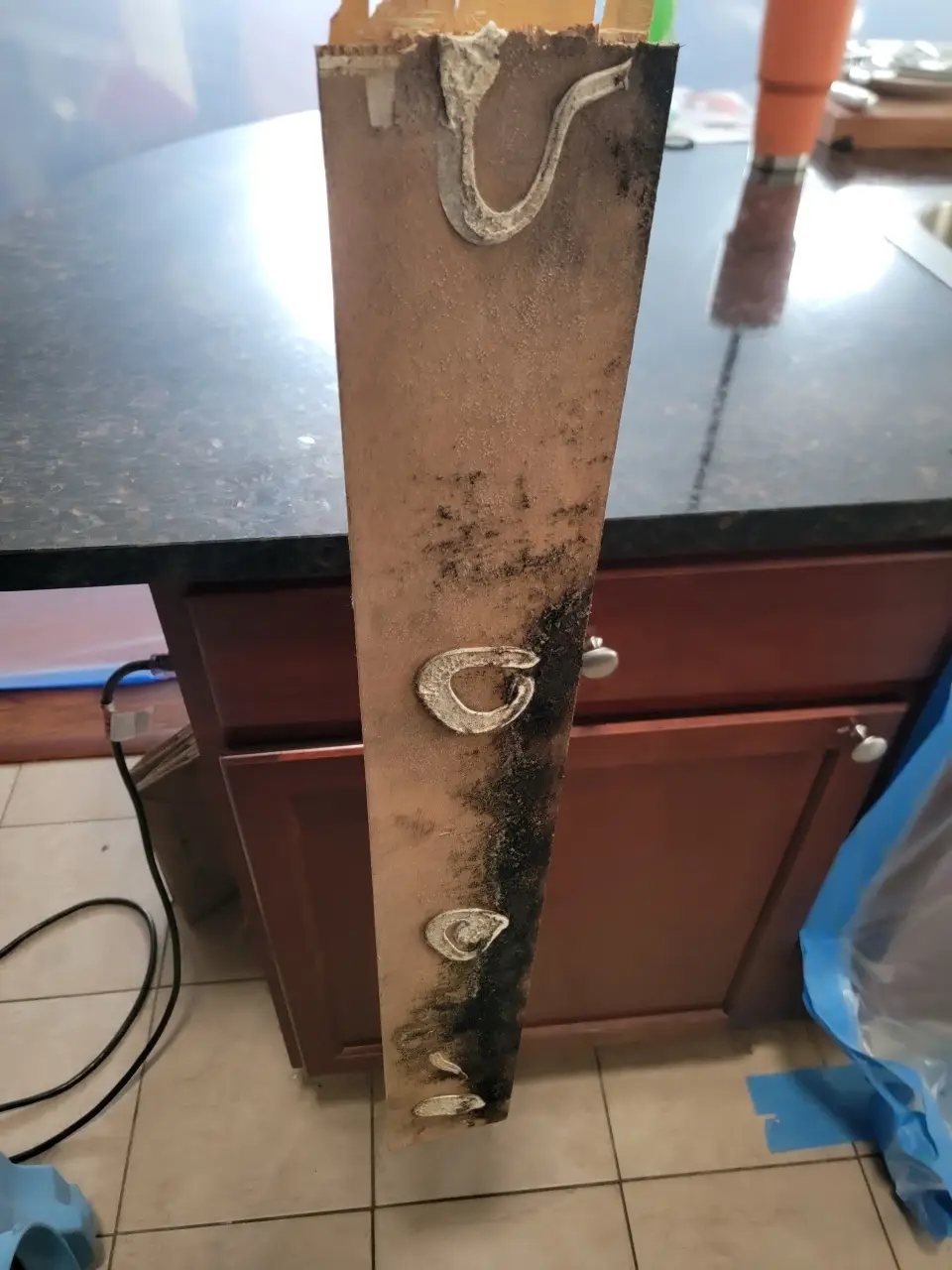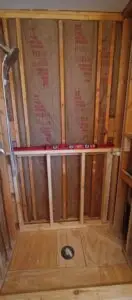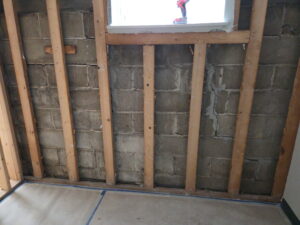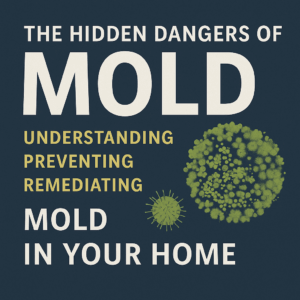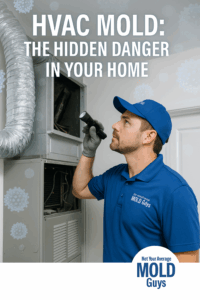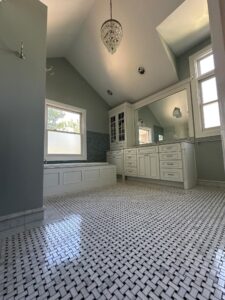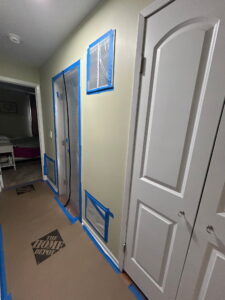Introduction: The Hidden Connection Between Mold, HVAC Systems, and Humidifiers
Mold issues often appear in obvious places—under sinks, in basements, behind drywall. But in Aurora, Illinois, where winters are dry and summers are humid, another less obvious mold culprit hides in plain sight: your HVAC system and humidifier.
While these systems are designed to keep your home comfortable, they can also become perfect breeding grounds for mold if not properly maintained. And because they’re often out of sight—in basements, closets, or ceiling vents—they can grow undetected until they become a serious health concern.
At Not Your Average Mold Guys, we’ve helped Aurora homeowners eliminate mold caused by improper humidity control and HVAC-related issues for years. In this blog, we’ll break down how it happens, signs to watch for, and how to prevent it—plus real stories from right here in the western suburbs.
1. Why Mold Loves HVAC Systems and Humidifiers
Let’s start with the basics. Mold needs just three things to thrive:
-
Moisture
-
Organic material (dust, insulation, etc.)
-
A dark, undisturbed space
Your HVAC system checks all the boxes—especially when combined with a whole-house humidifier or a poorly ventilated attic or crawl space.
Common Trouble Zones:
-
Evaporator coils inside your furnace or A/C
-
Condensation in ducts or vents
-
Humidifier pads and tanks
-
Drip pans that don’t drain
-
Improperly sealed ductwork
In Aurora homes, these conditions are even more common due to our wide range of temperatures throughout the year. The cold winters encourage indoor humidifier use, while hot summers make HVAC units work harder—producing more condensation that can fuel mold.
2. The Danger of Whole-House Humidifiers
Whole-house humidifiers are a popular addition in Illinois homes, especially during dry winters when static electricity shocks your socks and your skin feels like sandpaper.
But here’s the problem: if you over-humidify your home or don’t maintain the humidifier properly, you’re basically spraying mold’s favorite mist into every room.
Signs Your Humidifier May Be a Problem:
-
Visible mold near supply vents
-
Musty smells when your HVAC turns on
-
Condensation on windows or walls
-
Family members experiencing coughing, sneezing, or allergy-like symptoms
Humidifiers are useful tools—but only when balanced. That’s why our team often checks for humidity imbalances during mold inspections in Aurora homes.
3. HVAC Ductwork: A Mold Superhighway
Once mold starts growing in a damp area of your HVAC system, it doesn’t stay put.
Because your ducts are designed to move air throughout your entire home, they can also spread mold spores to every room—especially bedrooms and living areas.
Red Flags:
-
A musty smell every time the HVAC runs
-
Dark spots or streaks around ceiling vents
-
Allergy symptoms that worsen when indoors
-
Uneven heating or cooling (blocked or compromised ducts)
It’s one of the most common ways small mold issues become house-wide mold problems. If your Aurora home has forced air heating and cooling, it’s worth having your ductwork inspected regularly.
4. How Humidity Fluctuations in Illinois Worsen the Problem
Aurora’s climate throws everything at your home: icy winters, wet springs, muggy summers, and dry falls.
This constant shift stresses your HVAC system and your home’s building materials. That means:
-
Condensation forms inside ducts as warm air meets cold surfaces
-
Humidifiers are used more often, sometimes improperly
-
Air handlers and furnaces located in basements pull in moist air
-
Attics and crawl spaces become moldy due to ventilation gaps
This is why even newer homes in subdivisions like The Lindens or Stonegate West can have hidden mold issues. It’s not just age—it’s climate, usage, and system maintenance.
5. Real Story: Mold in an Aurora Family’s Vent System
We recently worked with a young family living in Aurora’s Far East Side who noticed a faint musty smell coming from their vents. After months of sinus issues and headaches, they called us for a full inspection.
What we found:
-
A clogged humidifier pad full of biofilm
-
Mold growing on the evaporator coil and drip pan
-
Mold spores distributed through their ductwork into all four bedrooms
-
A persistent humidity level above 65%
We cleaned and treated their HVAC system, replaced the humidifier, sealed leaky duct joints, and installed a smart thermostat to monitor humidity moving forward.
Their symptoms disappeared—and so did the smell.
6. Steps You Can Take to Prevent Mold from HVAC and Humidifiers
You don’t have to rip out your system or live in fear. Here are some proactive steps to prevent HVAC-related mold in your Aurora home:
✅ Change your humidifier pad annually
Mold and mineral deposits can build up quickly. Change it every season to be safe.
✅ Keep indoor humidity between 35–50%
Use a hygrometer or install a thermostat that tracks humidity.
✅ Clean your HVAC coils and drip pans
A professional should inspect and clean them annually, especially before summer.
✅ Seal and insulate ductwork in attics or crawlspaces
This prevents condensation from forming inside the system.
✅ Schedule duct cleanings
Every 3–5 years for most homes, or more often if allergies or mold have been issues.
✅ Use UV air purifiers or HEPA filtration
These reduce airborne mold spores and improve air quality.
✅ Avoid overusing portable humidifiers
Set timers and always monitor the humidity in rooms where they’re used.
7. When to Call the Pros (And Why It Matters)
DIY is great for prevention—but once mold takes hold in your HVAC system, it’s best to call professionals like Not Your Average Mold Guys.
Here’s why:
-
We can detect hidden mold in ducts, behind walls, and around systems
-
We use non-invasive inspection tools like infrared cameras and moisture meters
-
Our mold removal process is safe, thorough, and fully certified
-
We offer post-remediation testing so you can breathe easy again
Plus, we don’t just treat mold—we help you figure out why it started and how to stop it from coming back.
8. Why Aurora Homeowners Trust Not Your Average Mold Guys
We’re not a national chain. We’re Illinois locals, and we care about our neighbors. That’s why families in Aurora choose us when they need reliable answers and real solutions.
Here’s what sets us apart:
✅ Fast, friendly, and transparent service
✅ Locally owned and operated
✅ Advanced tools and certified technicians
✅ Clear communication and honest pricing
✅ Long-term prevention advice—not just temporary fixes
From historic homes near downtown Aurora to newer builds in Oakhurst North, we’ve seen every kind of mold—and we know how to stop it.
Conclusion: Your Comfort System Shouldn’t Compromise Your Health
HVAC systems and humidifiers are designed to make your home more comfortable—but when they’re neglected or misused, they can create an ideal environment for mold growth.
If you’ve noticed odors, increased allergies, or musty vents in your Aurora home, don’t wait. Mold can spread quickly—and the longer it’s in your system, the more expensive it is to remediate.
At Not Your Average Mold Guys, we’re here to help with fast inspections, expert solutions, and mold prevention that actually works.
Call to Action:
📞 Worried about mold in your HVAC system? Contact Not Your Average Mold Guys today for a mold inspection in Aurora, IL—and let us help you breathe easy again.


